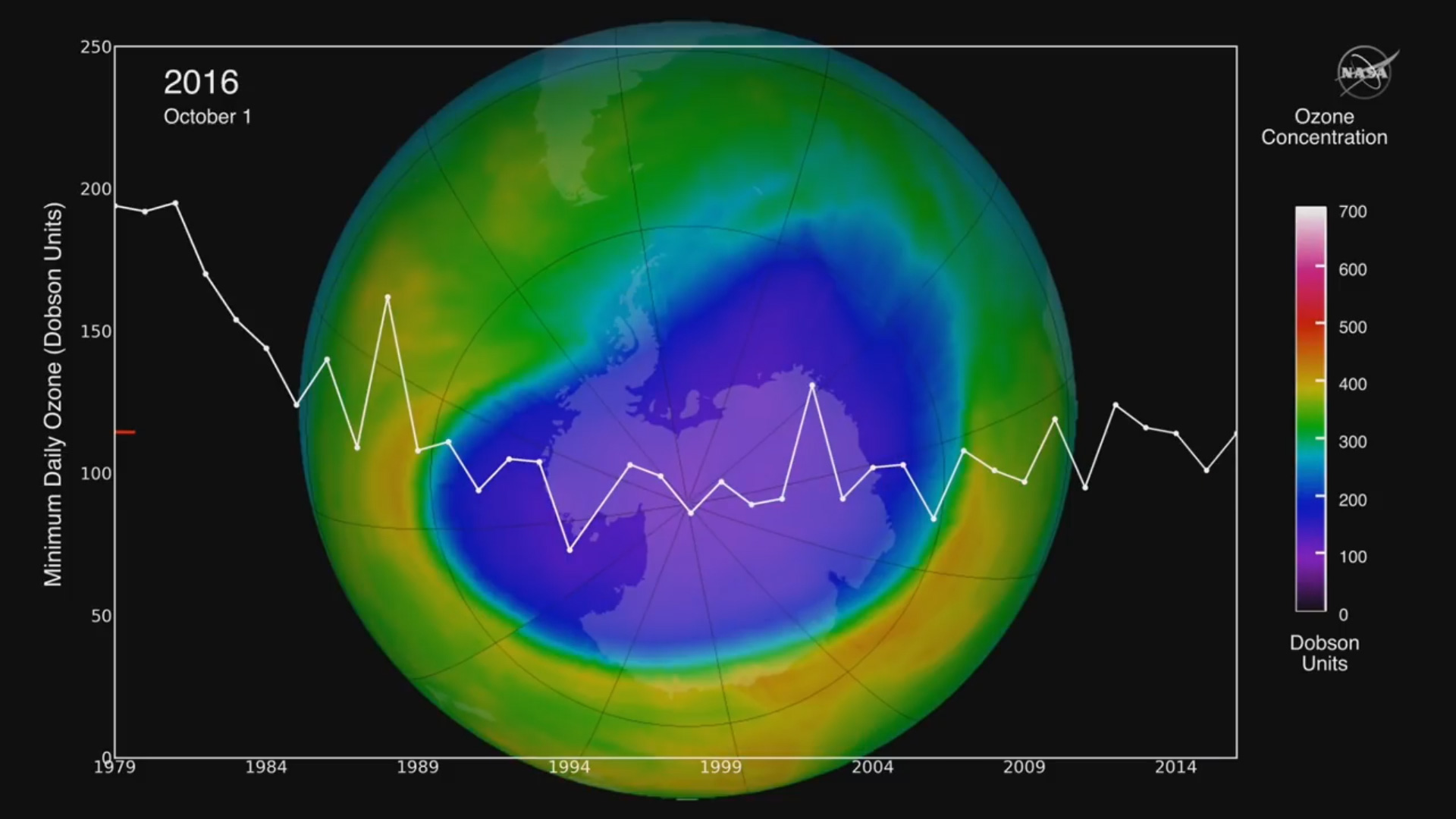NASA: Montreal Protocol a Success (Saving the Ozone Layer)
Using measurements from NASA's Aura satellite, scientists studied chlorine within the Antarctic ozone hole over the last several years, watching as the amount slowly decreased.
Using measurements from NASA’s Aura satellite, scientists studied chlorine within the Antarctic ozone hole over the last several years, watching as the amount slowly decreased.
This is the first definitive evidence of the success of the Montreal Protocol on Substances that Deplete the Ozone Layer, which was ratified in 1987. The international treaty banned the use of chlorofluorocarbons and related compounds, which break down in the stratosphere and release chlorine molecules. This chlorine depletes the ozone layer and is responsible for creating the hole in the ozone layer over Antarctica.
The ozone hole fluctuates each year, reaching an annual maximum at the end of southern winter, usually in September. The hole has been trending smaller for the last few years, but as temperature has an effect on ozone-depletion, this was not definitive evidence of the Montreal Protocol’s efficacy. Although scientists have been measuring levels of chlorine near the ground for decades, this study is the first time anyone accurately measured chlorine levels inside the ozone hole, confirming that the Montreal Protocol is doing its job. Complete transcript available.
This video is public domain and along with other supporting visualizations can be downloaded from the Scientific Visualization Studio at: http://svs.gsfc.nasa.gov/12816
- New Study Showing Ozone Recovery Hailed as Model for Tackling Climate Crisis https://www.ecowatch.com/ozone-recovery-2522813339.html
- Montreal Protocol https://en.wikipedia.org/wiki/Montreal_Protocol
